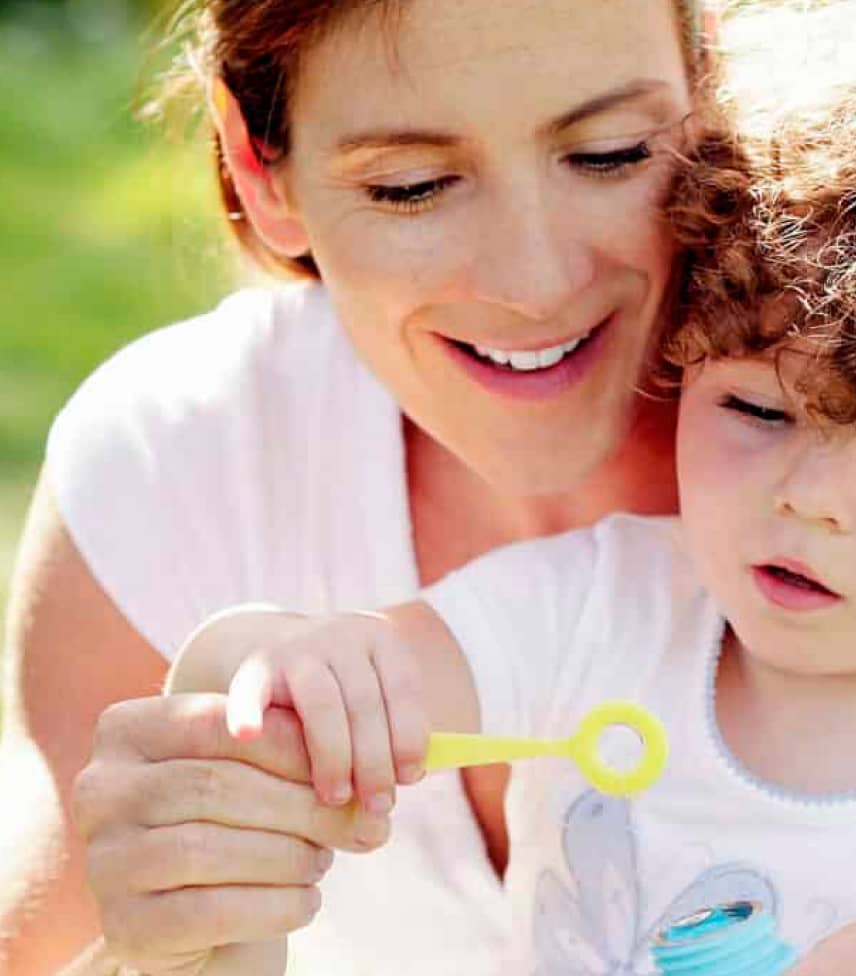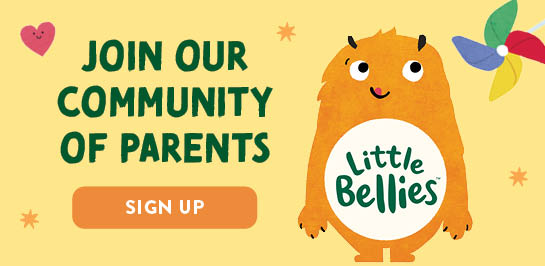

FAQs
View our most frequently asked questions below.
Products & Ingredients
-
Yes, all our baby and toddler products (ages 4+ months to 12+ months) are certified organic. The foods we produce are made with carefully selected organic ingredients and grown naturally without the use of synthetic pesticides and fertilisers.
-
Yes, all Little Bellies products are non-GMO.
-
Little Bellies sultanas and fruit bars are Kosher.
-
Little Bellies biscuits, sultanas and fruit bars are Halal.
-
- We strive to keep things as simple as possible and work with our suppliers to eliminate, or at least absolutely minimise the presence of any commonly known allergens throughout the entire manufacturing process.
- Some of our products are produced on shared manufacturing lines that also handle allergen-containing foods. Where this is the case, we will highlight this on our packaging.
- For all allergen information, please refer to our product page or packaging.
Little Bellies Packaging
-
All the Little Bellies products you know, and love are still the same – now all under the same Little Bellies name to make it easier to recognise us. Look out for age and stage indications on our packaging.
We regularly update our packaging designs to improve our customer shopping experience, so as we roll through the updates, you might see old and new in the same period. Please be assured the product is all the same.
-
You will find the “best before” date on the back of our packaging.
-
Once opened, keep refrigerated and eat within 24 hours.
-
Little Bellies pouches are absolutely BPA-free!
-
All of our paper and cardboard packaging is fully recyclable in every country we operate in.
Some of our packaging is soft plastics, which may be recyclable in certain areas depending on the local recycling programs. Please check with your local council or recycling centre.
What makes Little Bellies snacks natural?
-
Natural means nothing artificial or synthetic has been used that you wouldn’t expect to find in your food. We only use natural food ingredients that you can recognise such as vegetables, fruit, lentils and grains.
Our baby and toddler snacks are made with carefully selected organic ingredients and grown naturally without the use of synthetic pesticides or fertilisers.
All our products are free from artificial colours, flavours or additives.
-
The processes used to make our products help to extend their shelf life and preserve them, for example in the same way as baking a cake or cooking a sauce also extends the life of the raw ingredients used.
The ingredients we select are also already naturally preserved. For example, the corn flour and fruit powders have been dried and milled, naturally giving them a longer shelf life, which then allows our products to be preserved for longer.
We also make sure we use high-quality packaging that is suitable for the end product. The packaging we use prevents light and oxygen from entering the packs, therefore allowing our products to stay at their freshest for a longer period of time.
-
We will never use GMO ingredients or artificial colours, flavours or additives.
Our baby and toddler snacks (4+ months to 12+ months) are made with carefully selected organic ingredients and grown naturally without the use of synthetic pesticides or fertilisers. Furthermore, we don’t use cane sugar or add simple sugars such as rice syrup, honey, or maltodextrin. Where flavour is required, we simply use dried organic fruit powders, which give a subtle hint of sweetness.
We visit and review each and every single one of our suppliers before we agree to partner with them. We meet their team, discuss our requirements, learn from their expertise and take time to form meaningful and lasting relationships.
We safeguard quality by ensuring that the highest level of quality control is in place across all manufacturing processes and facilities.
Weaning
-
While every child is different, it’s generally considered safe to start introducing solids not before 16 weeks and generally not after 24 weeks. At this stage, you may start noticing some or all of the following signs that indicate your baby is ready for solids: can control head and neck; can stay seated upright when supported; interested in food, reaching for it and open their mouth when it’s offered to them on a spoon.
First solid foods should be nutritious, and the consistency should be a smooth thin paste, like the Little Bellies organic FIRST FLAVOURS fruit puree for 4+ months and SIMPLE SPOONFULS fruit and oat smoothies for 6+ months babies. Our range of purees is made with carefully selected organic ingredients, grown naturally without the use of synthetic pesticides.
For more information on introducing solids, please read our article Introducing Solids.
-
All our products are developed not only with a baby’s growing needs in mind but also with safety. Just the right tastes, textures, formats and portions to support your child at every age and stage in their development. Please follow the age recommendation on our packaging to find the appropriate product for your child. While we provide general age suitability, each child develops as an individual and parents should adjust suitability accordingly.
You can start with the Little Bellies pouch as early as 4 months: first, with our delicious, organic fruit purees, then extending to fruit & oat smoothies at 6 months.
If you’re ever not sure, please feel free to reach out to ask us more about our products.
-
First and foremost, remember that there are no hard rules. Every child is a unique little person with their own timeline. The most important thing to look at when deciding to start Little Bellies snacks is to ensure that your bub is able to sit independently. This is a developmental milestone that is essential before starting any finger foods. Every child is different, resulting in them reaching their milestones at different times. It’s important to look at your baby as an individual and not compare them to other babies of a similar age.
- With a large percentage of babies, at 6-7 months of age, they may be sitting independently and you may notice the raking grasp. As your baby is reaching for things and trying to bring them closer, you will see a raking motion. This marks the start of the self-feeding phase. So, at or around 7+ months, you could start with Little Bellies TASTY TEXTURES.
- From about 9 months of age, you may notice the pincer grasp. In this developmental stage, your baby is still using the pads of their fingers, not the tips, but now trying to reach and hold on to things with their pointer finger and thumb. This allows them to pick up and hold smaller foods, which helps promote self-feeding and independence. At or around 10 months, you can move up to our next range, MORE TO EXPLORE, adding more flavours, textures and shapes to help develop their pincer grasp, expand their palate and promote independence.
- More on developmental milestones and pincer grasp in our article Playing With Food Benefits: Developing Fine & Gross Motor Skills.
-
There are no hard rules as every child is different. When looking at Division of Responsibility (DOR), we believe that it’s essential to allow your child to regulate themselves, and watching their signs is essential when knowing if they have had enough or need more.
- At or around 16-24 weeks, when your baby is ready to transition to solids, start with 1-2 teaspoons of a single-ingredient puree like the Little Bellies organic apple or banana puree. Gradually increase to 1-2 tablespoons. The first bites are mostly about getting them to experience new flavours. At this stage, it is important to read their signs and be able to follow their lead, whether they want more or less. It is advisable to give their first foods in the morning so that if they have any reactions to the food, it isn’t overnight while they sleeping. Once you have exposed your baby to a food and they have tolerated it, you can start combining foods. Variety is very important for the development of taste.
- Once your baby has been having one meal a day for approximately 2-3 weeks, you can introduce a second meal and thereafter a third meal can be introduced. During this period, it is advisable to focus on iron-rich foods as from 6 months, their iron stores from birth, start dropping.
- At around 10 months, when your baby is well used to solids, their food becomes more important than their milk. It’s at this stage that you start giving food first followed by milk. Ideally, they should be eating every 2.5-3 hours through the day. At this stage, it is advisable for your baby to start having 3 meals and 2 snacks during the day. This may be a good time to add in some of Little Bellies baby snacks, TASTY TEXTURES, for morning and afternoon tea. These snacks can be introduced from 7+ months.
-
Little Bellies TASTY TEXTURES range of puffed snacks for 7+ months babies have been specifically designed for stage 1 snacking to help develop a palate, and pincer grasp and support safe self-feeding. In this range, we introduce subtle flavours, new texture experiences, and soft melt-in-the-mouth shapes that little fingers can hold.
-
Best to serve purees and meals to your baby at room temperature. Like you, your baby probably doesn’t like anything too cold or too hot. So, if you are serving food that’s been previously refrigerated, you might want to warm it up a little to a room temperature level. We recommend warming in a bowl of hot water, stirring through the food to avoid hot spots and best not to reheat it more than once.
If you choose to microwave a puree, please remove it from the pouch and warm it up in a bowl. Always remember to check the temperature before serving.
Other
-
Little Bellies is widely available across all major retailers. Go to a product page of the product you’re interested in and click on “Where to Buy” to find it in store in your area.
-
- Please use our contact form to get in touch.
- Please use our sign up form to subscribe to our newsletter.
- Please click on unsubscribe to stop receiving our newsletter and marketing emails.








